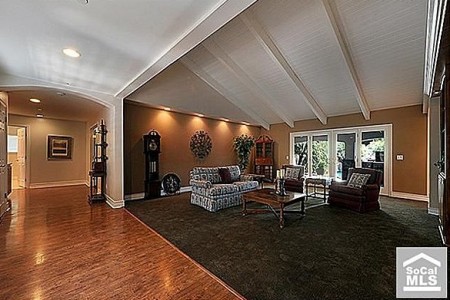A bulk of the U.S. population is getting older, faster. Twenty-five percent of America’s population of more than 300 million are Baby Boomers — people born during the post-World War II years of 1946 to 1964.
According to the U.S. Census Bureau, as this population ages, the median age will continue to rise. By 2030, there will be 70 million Baby Boomers over the age of 75. The median age will increase from 35.5 in 2000 to a peak of 39.1 in 2035.
As these Boomers age, society will need to adapt, too. Health care, employment, social service and entitlement costs will be impacted. Likewise, the way this aging population lives will need to be addressed, particularly in terms of special considerations in home design, says Stephen Melman, Director of Economic Services at the National Association of Home Builders (NAHB) in D.C.
“Aging in place is a major issue,” said Melman. “Ninety percent of households say they want to age in place, but only 20 percent have done anything about it.”
The traditional two-story McMansion or suburban tract home popular during the building boom of the 1980s and 90s will no longer be ideal for homeowners as they reach their 70s, 80s or 90s.
Ohio architect Richard Taylor said that one of the biggest updates he’s done in home design is adding a second master bedroom to the lower level.
“We’ve seen a lot of people who love their house and their neighborhood but they are afraid of not being able to get up and down the stairs to their master bedroom,” Taylor said.
This trend is reflected in the “New Home in 2015” study by the NAHB. Surveyed home builders ranked first-floor master bedrooms in second-story homes as “very likely” in new homes.
Main-level master bedrooms aren’t the only change in new constructed homes, said Melman.
“The idea is to incorporate things that people might need,” he explained. “If you anticipate using a wheelchair, that’s one issue.”
Other universal access additions include:
- Open floor plan
- Step-less, walk-in showers
- Lighted, wider hallways and doorways
- Slip-free surfaces
- Grab bars
- Countertops that can raise or lower
- Touchless or tap-on faucets
- Ramps
The need for aging in place solutions have created a pop-up of companies and online resources all designed to tackle education and installation of these features. Twenty percent of home builders expect new construction to embrace aging in place with more universal access in new homes.
“You don’t want it to be institutional,” Melman said. The idea is to have a home with “some flexibility built in.”
Send questions/comments to the editors.



Comments are no longer available on this story